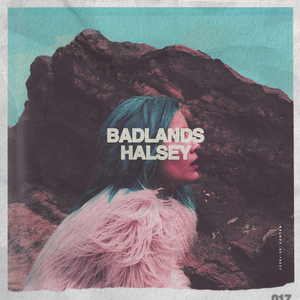 |
| Badlands (Halsey) |
BADLANDS uses a colourised style, which is a little posterised. The BADLANDS text is covering her eyes, which could symbolise how the audience is listening to her description of the 'badlands'--everything wrong with society--through her eyes. The obscuring of the eyes could also represent that she is nobody in comparison to the atrocities of the badlands and that she can't do anything about it.
 |
| Room 93 (Halsey) |
ROOM 93 uses a similar colourised style, using cyan and magenta. The image is small, like looking through a window. It could symbolise Halsey inviting the audience into her world. Her name is prominent on the cover, and the colours are inverted when the text obscures the window to create contrast. The cover is slightly distorted.
 |
| I Of The Storm (Of Monsters And Men) |
This cover is made up of a simple logo on a textured background. The logo is a sharp eye, representing the idea of the 'eye of the storm' referenced in the title. The group's name isn't used on the cover--only the stylised acronym.









